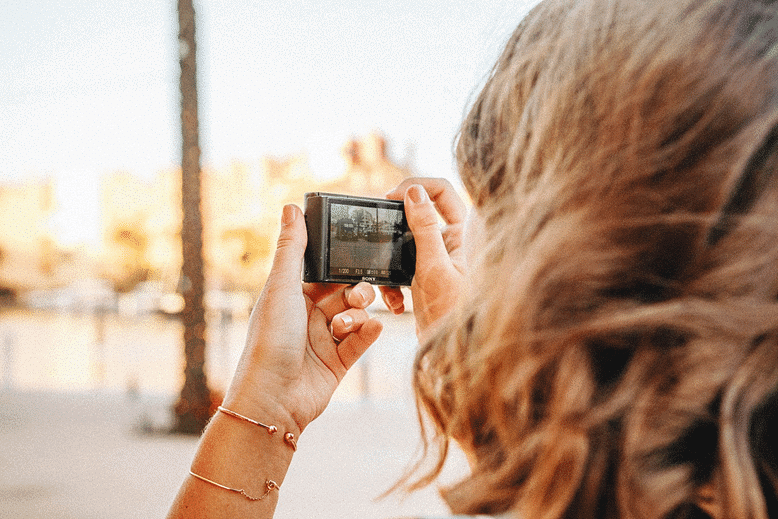Introduction to Digital Cameras | Digital Photography - Class 8 PDF Download
Introduction
Since the 1990s, digital cameras have become more and more common—and also more affordable. Because of this, it's now easier than ever to get started with photography. Luckily, you don't need to buy a professional-level camera to get good results. The most important factor is the skill of the photographer. In this tutorial, we'll show you how to use lighting, composition, and your camera's settings to take better digital photos—no matter what kind of camera you have.
What can you do with a digital camera?
There are many things you can do with a digital camera. Here are just a few examples:
- Capture memories: You can take snapshots of your friends or document your family's trip to the beach. If you want, you can print them on photo paper, or you can just view them on a computer, TV, or digital photo frame.

- Share your photos online: You can post your photos on Facebook, Flickr, Picasa, or another site. This is even easier if you have a smartphone since you can take a photo and upload it immediately.
- Use it as a scanner: If you don't have a scanner, you can simply take a photograph of a document. For example, you could take a picture of your tax forms to keep a record of them.
- Capture data: You can use a camera to help you remember things. For example, when you park your car at the mall or airport you can take a photo of the parking lot section number so you can find your car later on. You could also take pictures of things like store hours, phone numbers, and more. A camera phone is ideal for this since you'll always have it with you.
- Start taking photos as a hobby: You can hone your photography skills, get creative, and even use image-editing software to experiment with your photos. At this point, you may want to invest in a higher-quality camera to improve your photos.
Choosing a Digital Camera
If you're shopping for a digital camera, the number of choices can be overwhelming. However, if you can narrow your search to a specific price range or type of camera, then it may make your choice much easier. In addition, many cameras have special features such as red-eye correction and anti-blink, so you may want to think about which features are important to you.
Types of Digital Cameras
Most cameras can be grouped into four main types: digital SLR (or DSLR), point-and-shoot, bridge cameras, and camera phones. Each type has advantages and disadvantages, and some types are more expensive than others. To narrow down your search, try to determine which of these types will best fit your needs.
1. Compact Cameras: Compact cameras are designed to be affordable, convenient, and easy to use. They don’t feature a viewfinder, utilizing instead a screen that shows the frame or image.
2. DSLR Cameras: Short for "digital single-lens reflex," DSLR Cameras are large cameras with interchangeable lenses that can take very high-quality photos.
3. Mirrorless Cameras: Mirrorless Cameras are pocket-sized alternatives to DSLRs that feature interchangeable lenses.
Special Features
Digital cameras often have special features designed to help you take better photos. Depending on what types of photos you want to take, some of these features can be quite useful. Below are some things you may want to look for:
- Red-eye correction: This automatically removes red-eye, which is useful if you're taking photos with the flash on. If your camera doesn't have this feature, you can use image-editing software to remove red-eye.
- Sports/active child mode: This allows the camera to focus more quickly to capture action shots. Some cameras also use motion detection to "freeze" a fast-moving subject, making your photos even sharper.
- Anti-blink: This feature automatically detects whether someone has blinked and displays a warning after the photo is taken so you know to retake it.
- Smile detection: This uses face-recognition technology to take the photo right when your subject smiles.
- Blemish reduction: This automatically retouches your photos to reduce blemishes and wrinkles.
- Artistic effects: This allows you to add brush stroke effects, lens distortion, or other effects to give your photos a unique look.
Keep in mind that higher-end cameras (such as DSLRs) are less likely to have some of these features. For those cameras, you'll have to rely more on your own skill, as well as post-processing with Photoshop or a similar program. For everyday snapshots, the convenience of point-and-shoot cameras often makes them a better choice.
Memory Cards
Most digital cameras store photos on a separate memory card, such as a Secure Digital, SDHC, microSD, or CompactFlash card. These cards usually have several gigabytes of storage space, and the exact number of photos they can hold will vary depending on the resolution and file format of the photos. You may need to purchase a memory card separately, and it's important to choose a card that is compatible with your camera. You can find this information in your camera's manual, on the outside of the box, or online.
Generally, you'll want to use the memory card as temporary storage until you transfer your photos to your computer. You can then delete the photos from the memory card so you'll have plenty of space for your next photoshoot.
Batteries
Generally, cameras use rechargeable lithium-ion battery packs, although some can use AA batteries. The battery pack is usually included with your camera, but you may want to buy an extra one in case the battery runs out while you're shooting. Make sure to buy a battery pack that is designed to work with your camera.
the camera will also come with a charger you can use with your battery. It's a good idea to recharge the battery overnight so you'll be ready to take photos the next day.
|
15 videos|24 docs
|
















